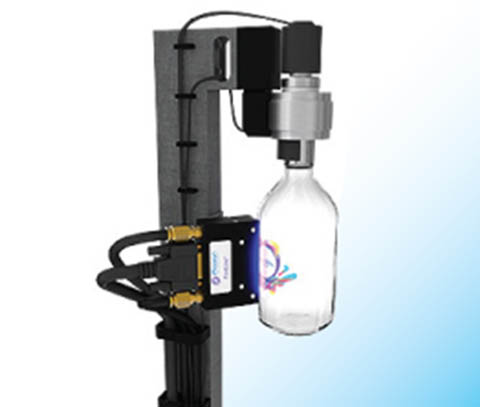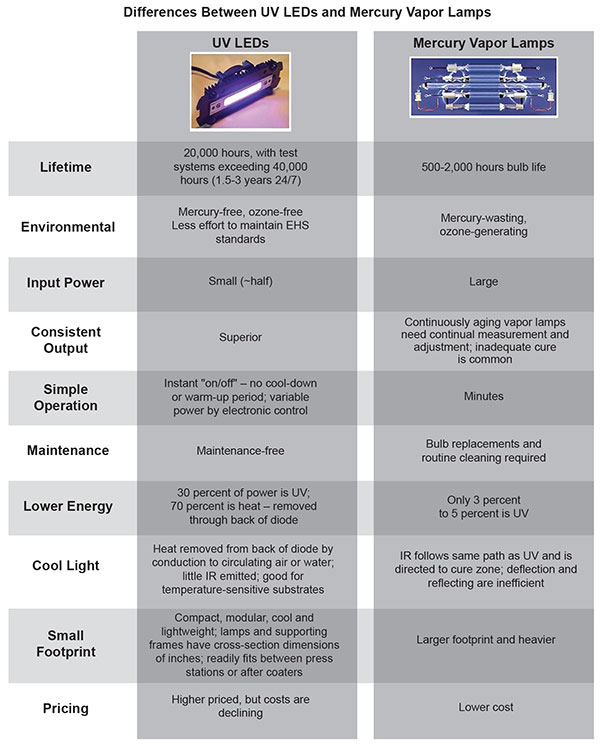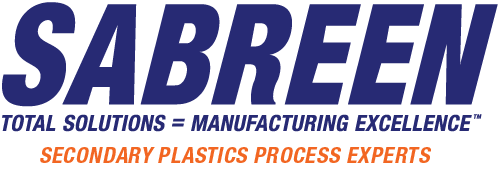
Digital UV inkjet printing on three-dimensional plastic products is “ready for prime time.” Advancements in UV LED curing technology overcome many curing problems associated with traditional mercury vapor lamps.
UV LED lamps are superior for curing low-viscosity UV inks on non-wettable, heat-sensitive polymeric and urethane/rubber substrates. However, not all LEDs are constructed the same or exhibit equal performance characteristics. This article is the first in a series to present process advancements for industrial UV inkjet printing on plastics.
Until recently, UV LEDs have been faced with technical and economic barriers that have prevented broad commercial acceptance. High cost and limited availability of LEDs, low output and efficiency, and thermal management problems – combined with ink compatibility – were limiting factors preventing market acceptance. With advancements in UV LED technology, utilization of UV LEDs for curing is arguably among the most significant breakthroughs in inkjet printing on plastics.
Easy to operate and control, UV LED curing has numerous advantages over mercury (Hg) vapor lamps. Small profile semiconductor devices are designed to last beyond 20,000 hours operating time (about 10 times longer) than UV lamps. Output is extremely consistent for long periods. UV LED emits pure UV without infrared (IR), making it process friendly to heat-sensitive plastic substrates. Reference Table 1 UV LEDs vs. Mercury Vapor Lamps.

UV LED Early Development Factors
LED and Hg vapor bulbs have different emission spectra. Photoinitiators are matched to the lamp, monomers, speed and applications. To achieve robust cure, LED requires different photoinitiators, and in turn, different monomer and oligomers in the formulations.
One of the most scrutinized areas of UV LED technology is the maximum radiant power and efficiency produced. Ink curing necessitates concentrated energy to be delivered to the curable ink. Mercury Hg bulbs typically have reflectors that focus the rays so the light is most concentrated at the ink surface. This greatly raises peak power and negates any competing reactions. Early LED lamps were not focused.
High power and efficiency are achievable with LED systems by concentrating the radiant energy through optics and/or packaging. High-power systems utilize grouping arrays of LED die. Irradiance is inversely proportional to the junction temperature of the LED die.
Maintaining a cooler die extends life, improves reliability and increases efficiency and output. Historical challenges of packaging UV LEDs into arrays have been solved, and alternative solutions are available, based upon application. Much of the development and adoption of LED technology has been driven by consumer electronics and displays.
Recent Significant Developments
- First, formulating changes and materials have been developed, and the vast knowledge has been shared. Many chemists now understand how to reformulate inks to match the lamps.
- Second, lamp power has increased. Diodes designs are improved, and cooling is more efficient so diodes get packed more closely. That, in turn, raises lamp power, measured in watts per unit area at the lamp face, or better, at the fluid.
- Third, lenses on lamp assemblies focus the power, so peak irradiance is higher. The combination of these developments is making LED directly competitive, if not superior, to Hg bulbs in many applications.
Wavelength
Depending upon the application and selection of inks, wavelength offerings typically include 365nm, 385nm and 395nm. Higher wavelengths are available for select chemistries. As wavelength increases the output power, efficiency and costs also scale, e.g., 365nm LEDs provide less output than 395nm LEDs.
The performance of the die is better at longer wavelengths, and the cost per watt output is lower while delivering more energy. Application history suggests that often 395nm solutions can effectively cure formulations more economically than 365nm alternatives. However, in some instances, 365nm or shorter wavelengths are required to achieve robust cure.
Integrated Systems Solutions
LED cure best complements digital inkjet printing. On reciprocating printheads, hot and heavy Hg bulbs require massive scanning system frames, which are not necessary with LED. Fixed head machines have the print heads assembled in modules and installed in overlapping rows. The compact, cool UV lamp fits nicely attached to a head module. Further, digital printing often is short run with frequent stops, so immediate “On/Off” yields greater productivity and revenue.
Thermal Management and Optics
There are two implementations of thermal management: water and air-cooling. Water cooling is an extremely efficient method of extracting heat, particularly in applications in which high power densities are required over large curing areas. With water cooling, lower temperatures can be obtained with higher efficiency and reliability.
A second advantage of water cooling is the compact UV LED head size, which permits integration where there is limited space around the curing area. The drawbacks of water cooling solutions are the heavier weight of the curing unit and added complexity and costs for chillers and water piping.
The second thermal management solution is air-cooling. Air-cooling inherently is less effective at extracting heat from water. However, using enhanced airflow methods and optics yields highly effective air-cooling curing systems, typically up to 12W per square centimeter. The benefits of air-cooled systems include ease of integration, light weight, lower costs and no external chillers.
Maximization of UV LED output power is critical. Via selective optics, the energy from LEDs can be delivered better to the substrate or ink. Different techniques are incorporated into integrated systems ranging from reflection to focused light using lenses. Optics can be customized to meet specific performance criteria. While the OEM (end user) should not necessarily be concerned with how the optics are provided in the UV LED lamp, they should recognize that suppliers? expertise varies, and all UV LED systems are not created equal.
Scott R. Sabreen is founder and president of The Sabreen Group, Inc., an engineering company specializing in secondary plastics manufacturing processes – laser marking, surface pretreatments, bonding, decorating and finishing, and product security. Sabreen has been developing pioneering technologies and solving manufacturing problems for over 30 years. He can be contacted at 972.820.6777 or by visiting www.sabreen.com or www.plasticslasermarking.com.
Dene Taylor, Ph.D., founded SPF-Inc. in 2000 to serve the printing and packaging industries, with a focus on adapting digital printing for new markets and applications. A nanochemist by training, about half of his 25 US patents are related to digital printing. He is a member of SGIA, TAPPI and RadTech. He can be reached at [email protected].



